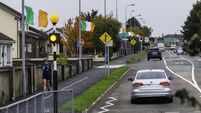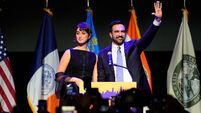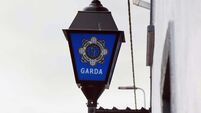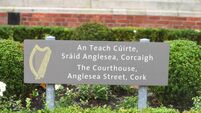Making birds feel at home
Former householders, angry at the financial institutions pursuing them, throw away the keys of their repossessed homes and locks have to be replaced. Fear of eviction runs deep in the Irish psyche; these are distressing times for many people.
Losing their homes is nothing new to birds. Humans began altering the landscape centuries ago, cutting down forests and clearing scrub. Trees with holes became thin on the ground and hole-nesting birds faced a housing crisis. Jackdaws tits and starlings, ever resourceful, squatted in chimneys barns and walls. House sparrows have been known to nest on lamp standards, parked vehicles and aircraft. Robins are even more famous for commandeering bizarre sites. Barn owls, as their name implies, accept offers of accommodation but with strings attached; they like to keep their distance. Ruined buildings are preferred to occupied ones.
Swallows and house martins also moved to farm buildings, although they didn’t really need to as their traditional cliff and cave sites were not threatened. Living with us has proved so congenial that nests in the wild are seldom recorded nowadays. Their relative, the sand martin, hasn’t sold out completely. It nests in quarries and there’s a colony in a seawall close to where I live, but natural sandy sites are still used. Swifts, which look like swallows but aren’t related to them, no longer bother with their traditional cliffs. The residence of choice these days is a church steeple or a ledge under the eves of a tall building.
In recent decades, however, our bird lodgers have faced a new eviction crisis. Changes in technology and design have rendered modern buildings less suitable for nesting; holes in walls and entry points to attics are gone. Nooks and crannies are out of fashion. So what is a bird to do?
Some architects, happily, have begun to address the problem. The Aviva Stadium, under construction in Dublin, was designed with environmental protection in mind. Speaking on RTÉ’s Mooney Show, spokesperson Deirdre O’Sullivan described some of the measures being taken. The giant curvilinear roof covering the stands has transformed the south Dublin skyline. It’s a light transparent structure, needing far less steel to support it than the traditional hay-barn stands did. A rainwater collection system is incorporated in the design. The harvested water, stored in tanks, will be used to irrigate the pitch, the grass for which will be grown from seed on site. Concrete from the old Lansdowne Road Stadium was crushed and used as filler, reducing the amount of material being transported to and from the site.
Nor have birds and their problems been forgotten; recommendations made by BirdWatch Ireland have been taken on board. House martins nested on a wall of the old stadium overlooking the Dublin-Wexford railway line, the insects swarming over the nearby River Dodder providing food for their chicks. Martins, which spend the winter in Africa, return each year to their traditional sites, so provision is being made for them in the new design. Artificial mud-cup nests will be erected beneath over-hangs to persuade the birds resume occupation. Swifts, too, are being accommodated; their preference is for enclosed flat surfaces and these will be available under the stadium roof.
Not all birds are welcome, however. Pigeons have been known to pooh on players during matches but another bird helped to reduce this problem in the past; peregrines visited the old stadium to prey on the pigeons. It’s hoped that they will continue doing so when the new one is commissioned. Suitable perching posts are available but, if a falcon were to nest, there could be legal problems; the place would become a protected site under the Wildlife Act. Nesting birds don’t take kindly to 50,000 cheering fans; either they or the spectators would have to go!
Providing accommodation for wildlife is not the responsibility of architects alone. Nest boxes can be effective even in the humblest dwellings. Birds begin searching for sites well in advance of the breeding season and February is an ideal month in which to offer a helping hand.
The most likely box nesters are blue tits. They require a fully enclosed box with an entrance hole in front, small enough to keep sparrows out. Boxes with larger holes will suit the sparrows and open boxes may attract robins.














